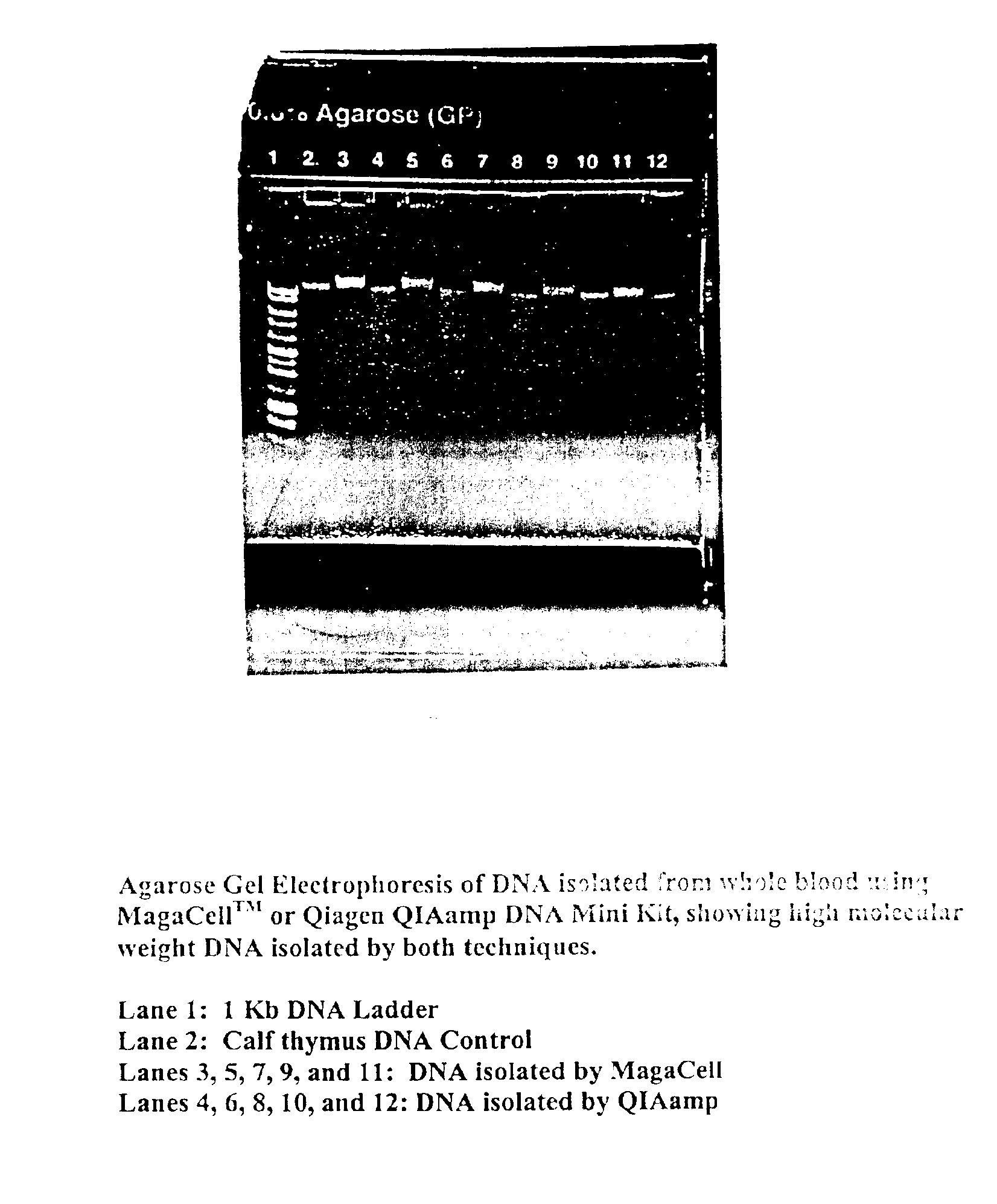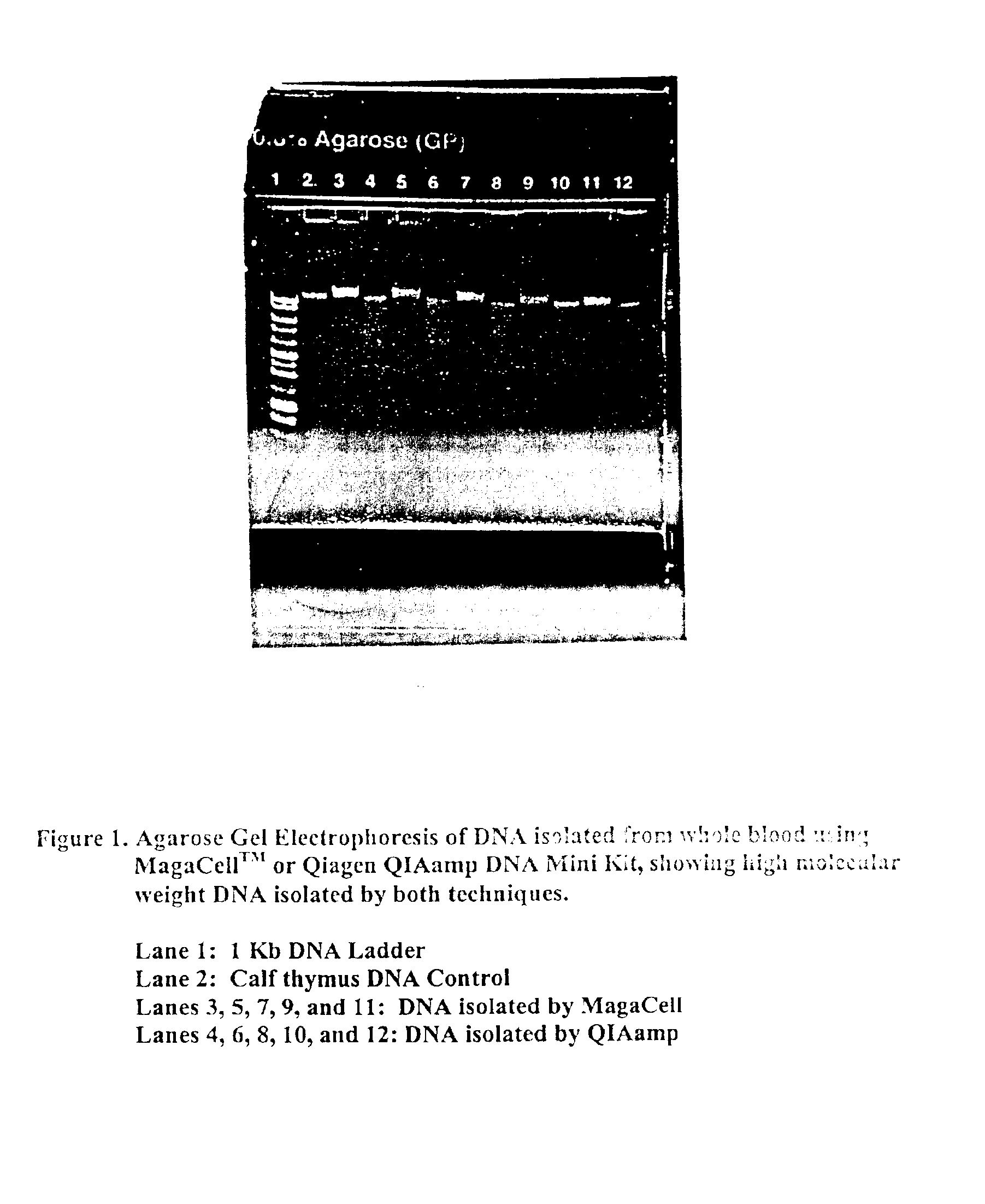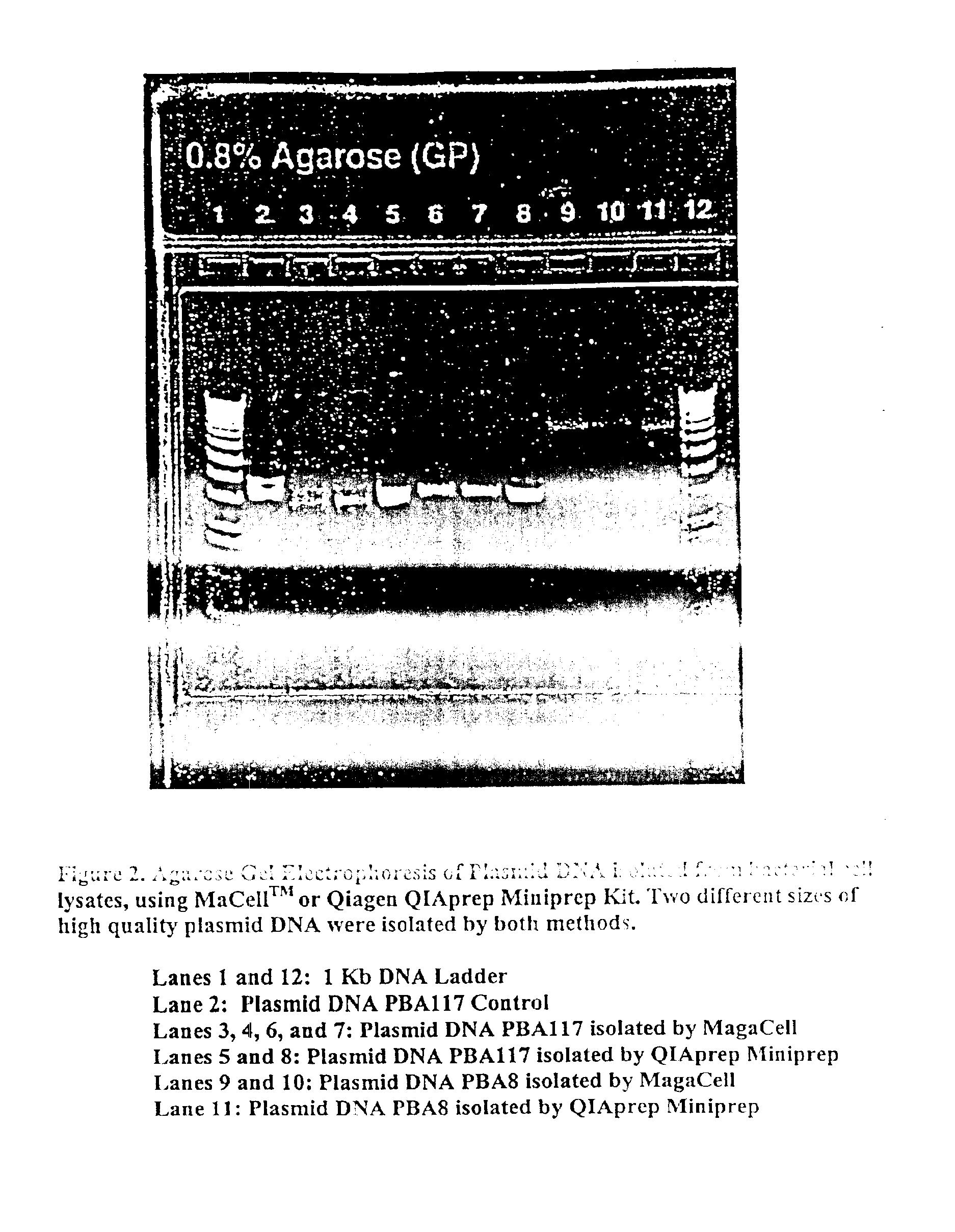Magnetic isolation and purification of nucleic acids
a nucleic acid and magnetic isolation technology, applied in the field of magnetic isolation and purification of nucleic acids, can solve the problems of time-consuming, laborious, and expensive procedures of the majority of these procedures
- Summary
- Abstract
- Description
- Claims
- Application Information
AI Technical Summary
Benefits of technology
Problems solved by technology
Method used
Image
Examples
example 1
, described above was repeated using magnetizable cellulose derivatives. These included: MagaCell™-CM and MagaCell™-DEAE (both obtained from Cortex Biochem, San Leandro, Calif.).
Results obtained with the MagaCell™ derivatives were comparable to those obtained by MagaCell™.
example 3
DNA Isolation from Whole Blood Using Magnetizable Cellulose
DNA from human whole blood samples was released using proteinase K and a specially formulated lysis buffer. The DNA was then bound to MagaCell Particles in presence of the Binding Buffer. The DNA bound to MagaCell Particles was then separated and washed from other contaminants. The DNA was eluted from the particles. The following procedure was used:1. Into a 2 ml microcentrifuge tube, pipet 20 μl (400 μg) of proteinase K solution in 10 mM Tris-HCl, 1 mM Calcium Chloride, 50% glycerol, pH 7.5.2. Add 200 μl of whole blood (heparin-, citrate- or EDTA-treated).3. Add 200 μl of the Lysis Buffer (50 mM Tris-HCl, 50 mM EDTA, 6 M Guanidine-HCl, 6 M Urea, 10 mM Calcium Chloride, 10% Tween-20, pH 6.3).4. Mix the tube content by pulse-vortexing for 15 sec.5. Incubate the tube content at 56° C. for 10 minutes.6. Remove the tube from 56° C., and add 560 μl of the Binding Buffer (10% PEG 8000 MW, 1.25 M NaCl), followed by 20 μl (1 mg) of ...
PUM
| Property | Measurement | Unit |
|---|---|---|
| Fraction | aaaaa | aaaaa |
| Percent by mass | aaaaa | aaaaa |
| Molar density | aaaaa | aaaaa |
Abstract
Description
Claims
Application Information
 Login to View More
Login to View More - R&D
- Intellectual Property
- Life Sciences
- Materials
- Tech Scout
- Unparalleled Data Quality
- Higher Quality Content
- 60% Fewer Hallucinations
Browse by: Latest US Patents, China's latest patents, Technical Efficacy Thesaurus, Application Domain, Technology Topic, Popular Technical Reports.
© 2025 PatSnap. All rights reserved.Legal|Privacy policy|Modern Slavery Act Transparency Statement|Sitemap|About US| Contact US: help@patsnap.com



